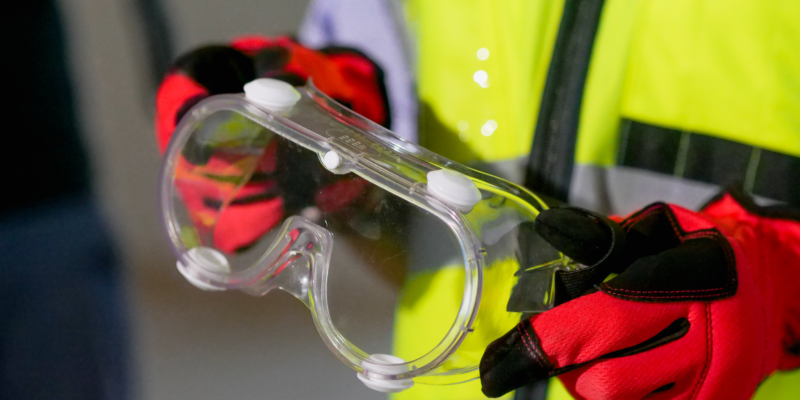In addition to National Cybersecurity Awareness Month, October is also Eye Injury Prevention Month!
Eye injuries can be both painful and potentially life-altering, especially in high-risk professions like ours. This is the perfect time to shine a spotlight on how those working in construction can proactively safeguard their eyes and prevent major accidents.
The Significance of Eye Safety in Construction
Construction sites are known for having a lot happening throughout the worksite. In a split second, a worker who isn’t wearing the proper eye protection can be in danger. Some common eye injury risks include:
Flying Debris: Tools, materials, and equipment can generate flying particles that pose a risk to unprotected eyes.
Chemicals: Construction sites often use chemicals for tasks like welding, painting, and cleaning, which can cause eye irritation or damage if they come into contact with the eyes.
Dust and Fine Particles: Dust from cutting, grinding, or drilling materials can irritate the eyes.
UV Radiation: Prolonged exposure to the sun’s ultraviolet (UV) rays can harm the eyes, especially when working outdoors.
Tips for Preventing Eye Injuries in Construction
Wear Appropriate Eye Protection: It may sound obvious, but the most critical step in preventing eye injuries is to wear suitable eye protection. Depending on the task, this can include safety glasses, goggles, or face shields. Ensure that your eye protection meets industry standards and is in good condition.
Know Your Environment: Familiarize yourself with the construction site and identify potential eye hazards. Be alert to flying objects, chemical exposure risks, and areas where eye protection is particularly crucial. If you think something might not be safe, ask a supervisor. It’s better to be safe than sorry.
Properly Maintain Tools and Equipment: Ensure that all your tools and equipment are in good working condition. Tools with broken or missing safety guards can increase the risk of eye injuries.
Use the Right Protection for the Job: Different tasks may require different types of eye protection. Choose the appropriate eyewear or face shield based on the specific hazards you’ll encounter.
Maintain a Clean Work Area: Keep your work area clean and free from debris and dust. Regularly clean up construction materials and ensure proper ventilation to reduce airborne particles.
Chemical Safety: When working with chemicals, wear eye protection and follow safety data sheet (SDS) guidelines for handling and storing chemicals.
Sun Protection: If your work involves outdoor construction, wear safety sunglasses with UV protection.
Regular Eye Exams: Prevention is the best way to protect your health, and your eyes are no exception. Schedule regular, annual eye exams to detect any vision problems early and ensure your eyes are in good health.
First Aid Knowledge: Know how to administer first aid for eye injuries, and keep an eye wash station or emergency eyewash readily accessible. Practice this first aid regularly. Your quick actions could mean the difference in protecting the sight of you or one of your coworkers.
Raise Awareness: Did you know there are over 2,000 eye injuries reported on construction sites in the US every year? Encourage your fellow construction workers to prioritize eye safety and report any unsafe practices or conditions to supervisors.
Remember, when it comes to your eyes, prevention is the key to a safer, healthier work environment. By adhering to best practices and consistently wearing appropriate eye protection, construction professionals can reduce eye injuries on the job.

